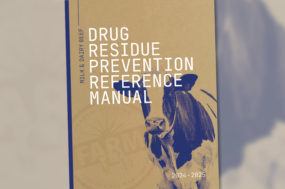As 2017 rapidly comes to a close, it is time to plan for 2018. As your dairy business continues to change with uncertain markets and shrinking basis over the Class III price, business planning becomes more critical than ever.
An effective business plan should represent the dairy business based on:
- Who is the plan for? A business plan should be for the owners to evaluate where the business is going and what is the business potential. Yes, the bank wants the business plan, but you have to know your business first.
- Why are you doing the business plan? Is it the annual business plan, is it to give direction to the business, or is it a workout plan for a troubled business? These approaches are similar, with the exception being the workout plans that usually require a three-year business plan.
- What is the current financial position of the business? For a business plan to be accurate, the business must provide an accurate picture of the current financial position. This needs to include all payables as well as potential capital expenditures during the year.
- When will you have the business plan completed? Business plans should usually have been done “yesterday.” It is never too early to do a projection for the coming year. It can be modified as the outlook changes. Having the framework together early allows you to quickly adjust the business plan accordingly.
Steps to develop a plan
Here are the steps I use to do an annual business plan:
1. Start with an executive summary.
This should be a brief overview of the current operations and any plans for the coming business year. Will there be any changes to the operation during the coming year, such as changes in acres or cattle numbers, or production changes? Spell out the big picture of what is expected to happen.
2. The balance sheet must be updated to accurately reflect the true financial position of the business.
Balance sheets should not reflect unrealistic values of cattle, facilities and land. If there is a recent appraisal, be sure to use those values.
3. List operational assumptions.
- Feed cost is the main cost input for the dairy. What are the projected feed costs for the dairy? Focus on purchased feed costs.
- Cropping acres and potential yields. Are there changes in rents or input costs?
- What are the cattle flow assumptions for the coming year, including cows milking each month, anticipated culling rates and death losses? Make monthly and annual milk production estimates.
- Milk price projection needs to be based on what we know currently. Always be conservative.
- Review labor costs and any potential changes in labor for the coming year. Be sure to allow for any anticipated increases.
- Identify potential capital replacement costs and any capital improvements for the year. Some of these may come with new borrowing, so make sure you include these payments.
4. Cash flow should be shown as a monthly report.
This will identify which months will have potential cash shortages and what the potential operating line requirements are.
5. Provide cash flow analysis.
- What is the operational cash surplus or deficit at the end of the year? The goal is a 5 percent cash surplus, which can be very difficult in some years.
- If there is a cash shortfall, are there any realistic changes in the plan that can improve the cash flow? Is there credit available?
- Determine the cost of production. Determine what breakeven cost per hundredweight the business is projected to have.
- A balance sheet comparison using the beginning and projected ending balance sheet is a very good tool to evaluate the projected financial performance of the business.
- From the balance sheet, determine the beginning and ending equity position of the business. Lenders look for 40 percent equity and higher. Determine the current ratio, dividing current assets by current liabilities; the ratio should be 1.2 or higher.
6. A sensitivity analysis is a good tool in evaluating the projected business plan.
Consider how the business plan is affected by:
- A 5 percent swing in production
- A 5 percent change in cow numbers
- A 50-cent-per-hundredweight change in the milk price
- A 10 percent change in feed prices


-
Mike Cypher
- Cypher Dairy Consulting LLC
- Email Mike Cypher





